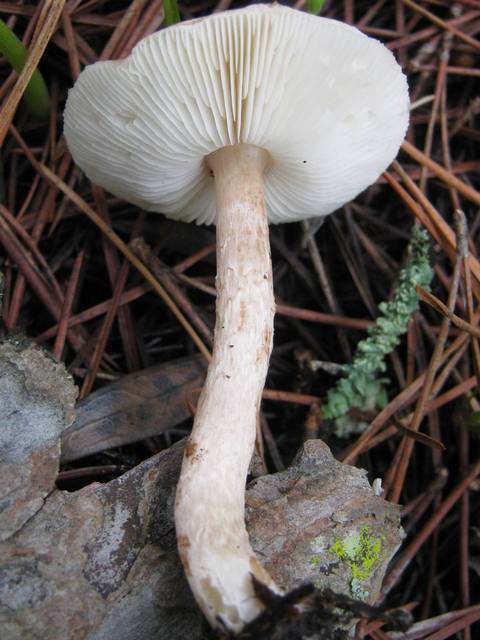Reproduction
 Fungi
like plants have an alternation of generations. They are
typically both sexual (meiotic) and asexual (mitotic) and
reproduce by spores that are usually wind disseminated.
Lepiota josserandii like
Ganoderma lucidum are fungi part of the phylum
Basidiomycota which have their
own typical mushroom forming life cycle. Spores are born
externally on a basidium and usually do not have asexual spores.
The Deadly Parasol spores during late summer, early fall and are
not dependent on light. An environmental cue is needed for
L. josserandii reproduction due to their stalk height,
diameter, and cap size being affected by temperature, humidity,
and fresh air. Lepiota josserandii begins it's sexual
reproduction when hyphae form two mycelia releasing sexual
signals. The mycelium is dikaryotic meaning two nuclei, the
cytoplasms then fuse together (plasmogamy). An environmental cue
is triggerd and the nuclei fuse together (karogomy). Meiosis
then produces four spored cells and they germinate.
Fungi
like plants have an alternation of generations. They are
typically both sexual (meiotic) and asexual (mitotic) and
reproduce by spores that are usually wind disseminated.
Lepiota josserandii like
Ganoderma lucidum are fungi part of the phylum
Basidiomycota which have their
own typical mushroom forming life cycle. Spores are born
externally on a basidium and usually do not have asexual spores.
The Deadly Parasol spores during late summer, early fall and are
not dependent on light. An environmental cue is needed for
L. josserandii reproduction due to their stalk height,
diameter, and cap size being affected by temperature, humidity,
and fresh air. Lepiota josserandii begins it's sexual
reproduction when hyphae form two mycelia releasing sexual
signals. The mycelium is dikaryotic meaning two nuclei, the
cytoplasms then fuse together (plasmogamy). An environmental cue
is triggerd and the nuclei fuse together (karogomy). Meiosis
then produces four spored cells and they germinate.
Basidiomycete life cycle in detail:

1. The fruting body which is the mature mushroom
2. Cross section through pileus (cap) where the amatoxin is
stored
3. Magnified view of the gills where spores are released
4. Highly magnified view of one basidium
which is the place of reproduction.
5. Germinating basidiospores usually
wind dispersed.
6. Primary Mycelium is an interwoven
mass of which the fungus feeds.
7. Fusion of cells of two primary mycelia
(plural for mycelium).
8. Clam Connection Development is
the separation of each hypha.
9. Secondary Mycelium
10. Extensive secondary mycelium giving rise to basidiocarps
11. Mushroom primoidia is the rising
of the fruiting body.
You're
so close to figuring out how it damages your liver. Keep reading! Click
here for interactions.
Are you wondering how big the structures of L. josserandii are? Click
the home page for a refresher!